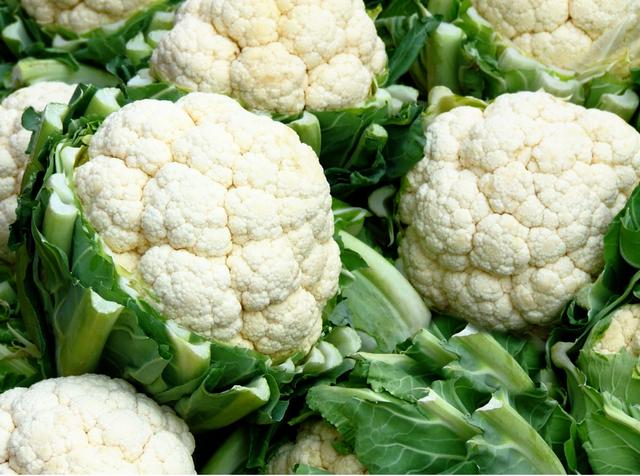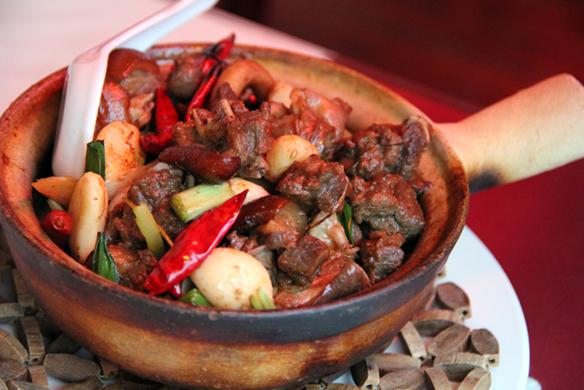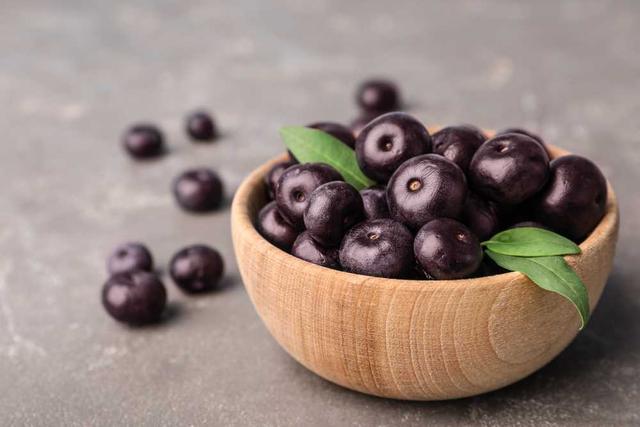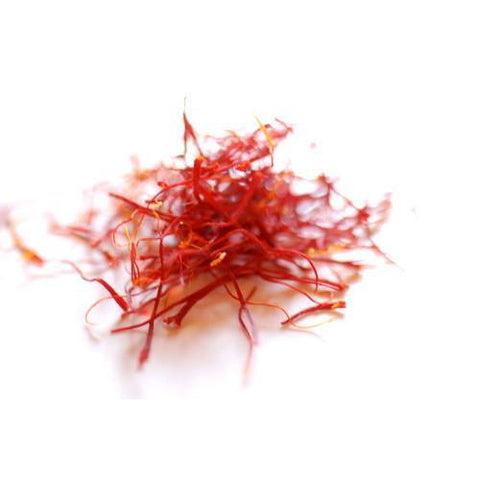
Curious about the taste of heart of palm? Discover the delectable flavors of this unique ingredient. Dive into our exploration as we unravel the distinct and delicate taste profile that makes heart of palm a culinary delight.
Exploring the Subtle and Nutty Flavor of Hearts of Palm

Hearts of palm, also known as ubod, palm cabbage, palmito, and chonta, are a unique vegetable that offers a subtle and nutty flavor. Similar to artichoke hearts, white asparagus, and water chestnuts in taste, hearts of palm have a distinct flavor profile that sets them apart from other foods. Their texture is fleshy, juicy, and slightly crunchy, making them both tender and hearty enough to serve as a meat substitute.
One of the reasons why hearts of palm are so versatile is their adaptability to various cooking styles. Whether you prefer sautéing them or adding them to salads, they can be prepared in different ways to suit your taste preferences. They can be crunchy or creamy depending on how they’re cooked.
In addition to their unique flavor and texture, hearts of palm also offer numerous health benefits. They are a rich source of protein, making them an excellent meat replacement for vegan and vegetarian dishes. Hearts of palm are also high in fiber, which promotes digestive health. They contain amino acids, vitamins, and minerals that contribute to overall nutritional value.
Furthermore, hearts of palm are low-carb and low in fat. Fresh hearts of palm have low sodium content compared to canned ones. You can find canned hearts of palm in the canned foods section at most grocery stores. However, if you’re looking for fresh hearts of palm, specialty produce stores or online platforms may be your best options due to their perishable nature.
If you’re interested in trying something new with hearts of palm beyond traditional preparations like salads or sautés, consider exploring heart of palm pasta. This alternative pasta option is chewier than regular flour-based pasta but offers a low-carb, low-calorie, gluten-free option that is suitable for keto and paleo diets. It can be found in some grocery stores or ordered online.
In conclusion, hearts of palm are a treasure worth exploring due to their subtle and nutty flavor. They can be used in various dishes, offering versatility and adaptability to different cooking styles. Whether you’re looking for a meat substitute or a unique pasta alternative, hearts of palm provide both taste and nutritional benefits. So go ahead and give them a try in your next culinary adventure!
Unveiling the Unique Taste of Hearts of Palm: A Delicate Fusion
Hearts of palm, also known as ubod, palm cabbage, palmito, and chonta, are a treasure in the world of food. These high-protein vegetables are packed with nutrients and make an excellent meat substitute. The taste and texture of hearts of palm are unlike many other foods, making them versatile and adaptable to various cooking styles.
Harvested from the core of palm trees such as coconut, peach palm, açai palm, and palmetto, hearts of palm grow in tropical areas like Central America, South America, and Southeast Asia. However, due to deforestation concerns from harvesting wild palms for their hearts, most hearts of palm today are cultivated from multi-stemmed palms in Costa Rica, South Asia, and the Amazon.
Hearts of palm have a subtle flavor similar to artichoke hearts, white asparagus, and water chestnuts. They are fleshy, juicy, slightly crunchy yet tender enough to act as a meat substitute. With their protein content and rich fiber content for digestive health maintenance, hearts of palm also provide amino acids, vitamins, minerals, and potassium for heart health.
While canned hearts of palm can be found in the canned foods section at grocery stores easily; fresh hearts of palm are harder to come by due to their quick spoilage. Specialty produce stores or online platforms may offer fresh hearts of palm options.
The versatility of hearts of palm is evident in their appearance in dishes ranging from salads to pastas and dips. They can be prepared crunchy or creamy depending on the desired outcome. Hearts of palm’s high protein content makes them suitable for vegan and vegetarian dishes while also being crafted into pasta alternatives.
For those looking for a simple way to incorporate hearts of palm into their diet can try sautéing them or adding them to salads. Hearts of palm’s texture and taste, similar to artichokes, make them adaptable to various dishes and pasta sauces. Hearts of palm pasta is a low-carb, low-calorie, gluten-free, high-fiber alternative to traditional flour-based pastas.
In conclusion, hearts of palm offer a unique taste experience that combines delicate flavors and textures. Their versatility in cooking styles and health benefits make them a valuable addition to any diet.
A Culinary Adventure: Discovering the Taste Profile of Hearts of Palm

When it comes to exploring new flavors and ingredients, hearts of palm are a true culinary adventure. These versatile vegetables have a taste profile that is both unique and delicious. Similar to artichoke hearts, white asparagus, and water chestnuts, hearts of palm offer a subtle flavor that adds depth to any dish. Their fleshy texture is juicy and slightly crunchy, making them a satisfying alternative to meat. Whether you’re a vegan or simply looking for a nutritious addition to your diet, hearts of palm are an excellent choice.
One of the standout features of hearts of palm is their nutritional value. Packed with protein, fiber, amino acids, vitamins, and minerals, they provide a wealth of health benefits. They are particularly rich in potassium, which supports heart health and helps reduce high blood pressure. Despite their nutrient density, hearts of palm are low in carbs and fat. Fresh hearts of palm are also low in sodium compared to canned varieties.
Finding hearts of palm can be a bit challenging as they spoil quickly. Canned hearts of palm can usually be found in the canned foods section at your local grocery store. However, if you’re looking for fresh hearts of palm, your best bet is a specialty produce store or an international grocery. You may also consider purchasing them online for convenience.
Once you’ve obtained hearts of palm, the possibilities for cooking with them are endless. From salads to pastas and dips, these vegetables can be incorporated into a wide range of dishes. They can be enjoyed crunchy or creamy depending on how they’re prepared. For a simple introduction to hearts of palm, try sautéing them or adding them to your favorite salad recipe.
If you’re feeling more adventurous in the kitchen, consider using hearts of palm as a pasta alternative. Hearts of palm pasta offers a chewier texture compared to traditional pasta, but it is low in carbs, calories, and gluten-free. It can be a great option for those following a keto or paleo diet. Look for hearts of palm pasta at select grocery stores or inquire about special ordering.
In conclusion, hearts of palm are a treasure worth discovering in the culinary world. With their unique taste profile and versatility, they can elevate any dish and provide numerous health benefits. Whether you’re a meat lover looking for a nutritious substitute or a vegan seeking new flavors, hearts of palm are sure to impress your taste buds. Embark on your own culinary adventure and explore the many ways to cook with this delightful vegetable.
From Artichokes to Water Chestnuts: The Delightful Similarities in Heart of Palm’s Flavor
A Unique Flavor Profile
Hearts of palm have a subtle flavor that can be compared to artichoke hearts, white asparagus, and water chestnuts. This unique combination of flavors makes hearts of palm a versatile ingredient in various dishes. Whether you’re looking for a nutty taste or a neutral flavor that adapts well to different cooking styles, hearts of palm won’t disappoint.
A Textural Delight
In addition to their distinctive taste, hearts of palm also offer a satisfying texture. They are fleshy, juicy, and slightly crunchy, providing a delightful mouthfeel. Their tender yet hearty consistency makes them an excellent meat substitute for those looking for plant-based alternatives.
Nutritional Benefits
Hearts of palm not only provide a delicious culinary experience but also offer numerous health benefits. They are rich in protein, making them an ideal choice for vegans and vegetarians seeking alternative protein sources. Hearts of palm are also high in fiber, aiding in digestion and promoting overall digestive health. Additionally, they contain essential amino acids, vitamins, and minerals that contribute to a well-rounded diet.
Potassium Powerhouse
If you’re concerned about your heart health or high blood pressure, hearts of palm can be beneficial due to their high potassium content. Potassium is known to support heart health and help regulate blood pressure levels. By incorporating hearts of palm into your meals, you can enjoy their unique flavor while taking care of your cardiovascular system.
Finding Hearts of Palm
While canned hearts of palm are readily available in most grocery stores’ canned foods section, finding fresh ones might require some effort. Fresh hearts of palm spoil quickly and are best sourced from specialty produce stores, online retailers, or international grocery stores. These fresh hearts of palm offer a superior taste and texture compared to their canned counterparts.
Cooking with Hearts of Palm
Hearts of palm are incredibly versatile in the kitchen and can be used in a wide range of dishes. They can add a satisfying crunch to salads or be sautéed for a more tender texture. Their neutral flavor makes them an excellent addition to pasta sauces or as pasta toppers, and they even come in the form of pasta themselves. Hearts of palm pasta is a low-carb, low-calorie, gluten-free alternative that fits well into various dietary preferences, such as keto and paleo.
In conclusion, hearts of palm are truly a treasure in the culinary world. With their unique flavor profile, satisfying texture, and numerous health benefits, they deserve a place on your plate. So go ahead and explore the delightful similarities between hearts of palm and other beloved ingredients like artichokes and water chestnuts – you won’t be disappointed!
Hearts of Palm: A Meat Substitute with a Distinctive Taste and Texture
Hearts of palm, also known as ubod, palm cabbage, palmito, and chonta, are a unique and nutritious food that can be considered a treasure. These high-protein vegetables are packed with nutrients and make an excellent meat substitute. With their distinct taste and texture, hearts of palm can adapt well to various cooking styles. Let’s explore what hearts of palm are, where to find them in stores, and how to cook with them.
What Are Hearts of Palm?
Hearts of palm are harvested from the core of certain palm trees such as coconut, peach palm, açai palm, and palmetto. These trees grow in tropical regions like Central America, South America, and Southeast Asia. However, due to deforestation concerns, harvesting hearts from single-stemmed wild palms has been banned. Nowadays, most hearts of palm are cultivated from multi-stemmed palms in Costa Rica, South Asia, and the Amazon.
Taste and Texture
Hearts of palm have a subtle flavor similar to artichoke hearts, white asparagus, and water chestnuts. They have a fleshy texture that is juicy and slightly crunchy – tender yet substantial enough to serve as a meat substitute. The consistency is comparable to artichoke hearts and jackfruit.
Nutritional Benefits
Hearts of palm are not only delicious but also highly nutritious. They are an excellent source of protein, making them suitable for vegan and vegetarian dishes. Additionally, they contain fiber for digestive health and provide essential amino acids, vitamins, and minerals. Hearts of palm are particularly rich in potassium which promotes heart health and helps lower blood pressure. Despite their nutrient density, fresh hearts of palm are low in carbs, fat, and sodium.
Where to Find Hearts of Palm
Canned hearts of palm can usually be found in the canned foods section of grocery stores. However, fresh hearts of palm are more challenging to come by as they spoil quickly. Your best options for finding fresh hearts of palm are specialty produce stores, online retailers, or international grocery stores.
Cooking with Hearts of Palm
Hearts of palm are incredibly versatile and can be used in a wide range of dishes such as salads, pastas, and dips. They can be prepared to be crunchy or creamy depending on your preference. If you’re new to using hearts of palm, try sautéing them or adding them to a salad for a simple introduction. Their neutral taste allows them to blend well with various flavors and sauces. Hearts of palm pasta is also gaining popularity as a low-carb and gluten-free alternative to traditional flour-based pasta.
In conclusion, hearts of palm offer a distinctive taste and texture that sets them apart from other vegetables. With their nutritional benefits and versatility in cooking, they make an excellent meat substitute for those looking for plant-based options or simply wanting to try something new.
Unlocking the Palate-Pleasing Secrets of Hearts of Palm’s Flavors

Hearts of palm have a unique and subtle flavor that is reminiscent of artichoke hearts, white asparagus, and water chestnuts. This delicate taste adds a touch of sophistication to any dish. Whether you’re using them in salads, pastas, or dips, hearts of palm bring a refreshing and slightly nutty flavor that pairs well with a variety of ingredients.
One way to enjoy the flavors of hearts of palm is by sautéing them. Heat some olive oil in a pan and add sliced hearts of palm along with your choice of seasonings. Sauté until they are lightly browned and tender. This method brings out their natural sweetness and enhances their texture.
Another popular way to incorporate hearts of palm into your meals is by adding them to salads. Their fleshy and juicy texture provides a satisfying crunch that complements the other ingredients. Combine hearts of palm with fresh greens, tomatoes, cucumbers, and your favorite dressing for a refreshing salad that is both nutritious and delicious.
If you’re looking for a more indulgent option, consider using hearts of palm as a pasta alternative. Hearts of palm pasta has gained popularity among those following low-carb or gluten-free diets. It has a chewier texture compared to traditional pasta but offers fewer calories and carbohydrates. Pair it with your favorite pasta sauce or toss it with vegetables for a guilt-free meal option.
In addition to their delightful flavors, hearts of palm also offer numerous health benefits. They are packed with protein, fiber, amino acids, vitamins, and minerals. These nutrients contribute to maintaining digestive health, promoting heart health, reducing high blood pressure, and supporting overall well-being.
In conclusion, hearts of palm are not only versatile in cooking but also provide an array of palate-pleasing flavors. From their subtle taste similar to artichoke hearts to their fleshy and juicy texture, hearts of palm can elevate any dish. Whether you prefer them sautéed, in salads, or as a pasta alternative, hearts of palm offer a unique culinary experience that is both delicious and nutritious.
Hearts of Palm: A Savory Vegetable with a Hint of Artichoke-like Goodness

Hearts of palm, also known as ubod, palm cabbage, palmito, and chonta, are a versatile and nutritious vegetable that can be used as a meat substitute. Harvested from the core of various palm trees such as coconut, peach palm, açai palm, and palmetto, hearts of palm have a subtle flavor similar to artichoke hearts, white asparagus, and water chestnuts. They have a fleshy and slightly crunchy texture that makes them suitable for a variety of cooking styles.
One important thing to note is that the harvesting of hearts of palm has contributed to deforestation in tropical areas. As a result, harvesting from single-stemmed wild palms has been banned. Nowadays, most hearts of palm are cultivated from multi-stemmed palms in regions like Costa Rica, South Asia, and the Amazon.
In terms of nutritional value, hearts of palm are an excellent source of protein and fiber. They also contain essential amino acids, vitamins, and minerals. Additionally, they are rich in potassium which promotes heart health and helps reduce high blood pressure. Despite their nutrient density, hearts of palm are low in carbs and fat. Fresh hearts of palm have low sodium content compared to canned ones.
You can find canned hearts of palm in the canned foods section at your local grocery store. However, fresh hearts of palm can be harder to come by due to their short shelf life. Specialty produce stores or online shops may be your best bet for finding fresh hearts of palm.
When it comes to cooking with hearts of palm, the possibilities are endless. They can be used in salads, pastas, dips or sautéed as a simple dish on their own. Their neutral taste allows them to adapt well to different flavors and cuisines. Hearts of palm pasta is a popular alternative for those looking for a low-carb, gluten-free option. It has fewer calories compared to traditional pasta and can be found in some grocery stores or ordered online.
In conclusion, hearts of palm are a treasure in the culinary world. With their unique taste, texture, and nutritional benefits, they are a great addition to any meal. Whether you’re a vegan, vegetarian, or simply looking for new flavors to explore, hearts of palm offer a savory and versatile option that will surely delight your taste buds.
Taste Test: Comparing Hearts of Palm to White Asparagus and Water Chestnuts
Hearts of palm have a subtle flavor that can be compared to artichoke hearts, white asparagus, and water chestnuts. Like artichoke hearts, hearts of palm have a nutty taste but are largely neutral in flavor. They also share a similar texture with artichoke hearts, being fleshy, juicy, and slightly crunchy. This makes them a versatile ingredient that can adapt well to various dishes.
White asparagus is another vegetable that shares similarities with hearts of palm in terms of taste and texture. Both have a mild flavor profile, although white asparagus tends to be slightly sweeter. In terms of texture, both vegetables are tender but hearty enough to act as meat substitutes.
Water chestnuts are another food that can be compared to hearts of palm. Like hearts of palm, water chestnuts have a subtle flavor and a crunchy texture. However, hearts of palm are juicier and more fleshy compared to the crispness of water chestnuts.
In summary, hearts of palm have a unique taste and texture that resembles artichoke hearts, white asparagus, and water chestnuts. They offer a subtle nutty flavor and a fleshy yet slightly crunchy texture that makes them versatile in various dishes.
The Versatile Delicacy: Exploring the Tastes and Textures of Hearts of Palm
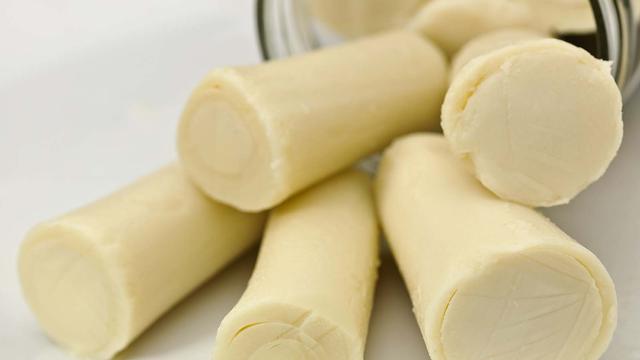
Hearts of palm, also known as ubod, palm cabbage, palmito, and chonta, are a unique food that offers a treasure trove of flavors and textures. Harvested from the core of various palm trees, including coconut, peach palm, açai palm, and palmetto, hearts of palm are found in tropical regions like Central America, South America, and Southeast Asia. Due to concerns about deforestation, most hearts of palm available today are cultivated from multi-stemmed palms in Costa Rica, South Asia, and the Amazon.
When it comes to taste and texture, hearts of palm offer a subtle flavor similar to artichoke hearts, white asparagus, and water chestnuts. They have a fleshy yet juicy texture that is slightly crunchy. This makes them tender enough to enjoy on their own or use as a meat substitute in various dishes. The consistency of hearts of palm is comparable to artichoke hearts and jackfruit.
Not only do hearts of palm provide an interesting culinary experience with their taste and texture, but they also offer numerous health benefits. They are rich in protein, making them an excellent option for those seeking plant-based protein sources. Hearts of palm are also high in fiber for maintaining digestive health and contain essential amino acids along with vitamins and minerals.
One notable nutrient found in hearts of palm is potassium. This mineral plays a crucial role in maintaining heart health and reducing high blood pressure levels. Additionally, hearts of palm are low-carb and low-fat while being naturally low in sodium when fresh (not canned). However, finding fresh hearts of palm can be challenging due to their short shelf life. Specialty produce stores or online platforms may be your best bet for sourcing fresh hearts of palm.
The versatility of hearts of palm shines through in various dishes, ranging from salads to pastas and dips. They can be prepared to be crunchy or creamy depending on your preference. Hearts of palm’s high protein content makes them a suitable ingredient for vegan and vegetarian recipes, and they have even been transformed into a pasta alternative. Sautéing hearts of palm or adding them to a salad are simple ways to incorporate them into your diet.
For those looking for a unique twist on traditional pasta, hearts of palm pasta offers a low-carb, low-calorie, gluten-free, and high-fiber alternative. While chewier than regular pasta, it is keto-friendly and suitable for the paleo diet. With only about 15 to 20 calories per cup compared to 200 calories in traditional pasta, hearts of palm pasta is a healthier option. Some grocery stores may carry hearts of palm pasta, or you can request special ordering if you’re interested in trying it.
In conclusion, hearts of palm are a versatile delicacy that brings an array of tastes and textures to the table. Whether enjoyed fresh or canned, they offer unique flavors similar to artichoke hearts while providing essential nutrients like protein and fiber. Incorporating hearts of palm into your cooking allows for endless culinary possibilities and provides a nutritious addition to vegan, vegetarian, or low-carb diets. So why not give this treasure from the palms a try?
From Crunchy to Creamy: How to Experience the Diverse Tastes of Hearts of Palm

Hearts of palm, with their unique taste and texture, offer a wide range of culinary possibilities. Whether you prefer crunchy or creamy dishes, there are numerous ways to enjoy the diverse tastes of hearts of palm.
One popular way to experience the crunchiness of hearts of palm is by sautéing them. Simply slice the hearts into thin strips and cook them in a skillet with some olive oil until they become slightly golden and crispy. This method brings out their natural nutty flavor and adds a delightful crunch to your dish.
If you’re more inclined towards creamy textures, consider incorporating hearts of palm into dips or spreads. Blend them with ingredients like Greek yogurt, garlic, and lemon juice to create a creamy dip that pairs perfectly with crackers or fresh vegetables. You can also use mashed hearts of palm as a base for sandwich spreads or as a filling for stuffed mushrooms.
In addition to their versatility in terms of texture, hearts of palm can adapt well to various flavors and cuisines. They work wonderfully in pasta dishes, absorbing the flavors of sauces and seasonings while adding a satisfying chewiness. Try tossing cooked hearts of palm pasta with your favorite sauce, such as tomato basil or garlic butter, for a delicious low-carb alternative.
For those seeking healthier options, hearts of palm are an ideal ingredient for salads. Slice them into rounds or julienne strips and toss them with mixed greens, cherry tomatoes, cucumbers, and your choice of dressing. The tender yet substantial texture of hearts of palm adds depth to salads while providing essential nutrients.
Lastly, if you’re looking for something truly unique, consider trying hearts of palm soup. Puree cooked hearts of palm with vegetable broth, onions, garlic, and herbs for a creamy and flavorful soup that can be served hot or chilled. This cold soup is not only refreshing but also helps reduce inflammation, making it a healthy and satisfying option.
In conclusion, hearts of palm offer a diverse range of tastes and textures that can be enjoyed in various dishes. From crunchy sautés to creamy dips, there are countless ways to incorporate this nutritious vegetable into your meals. So go ahead and explore the culinary possibilities of hearts of palm to add a delicious twist to your cooking repertoire.
In conclusion, heart of palm has a unique taste that can be described as mild, delicate, and slightly nutty. Its tender texture makes it a versatile ingredient in various dishes, offering a refreshing and satisfying addition to salads, stir-fries, and more. Whether enjoyed raw or cooked, heart of palm adds a delightful touch to any culinary creation.
Learn More About Grilling
If you want to learn more about grilling, check out these other helpful resources!

